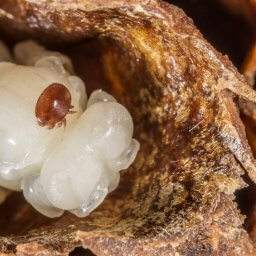
Summer is in full swing, and beekeepers are in the midst of tending to their hives, ensuring the health and well-being of their beloved honeybee colonies. A significant aspect of this care is managing varroa mites, a formidable threat to honeybee populations. There are many popular treatments available, in this article we'll delve into two potent summer treatments for varroa …

In the world of beekeeping, the health and prosperity of your hive can be significantly impacted by tiny invaders. Pests, if left unchecked, can threaten the survival of your colony. At Dadant Beekeeping, we understand the importance of maintaining a healthy and pest-free environment for your bees. Through vigilance and the right tools, you can protect your bees and ensure …

As the first signs of spring begin to show, beekeepers everywhere start preparing for the busy season ahead. Early March is a critical time for hive management, as the colonies awaken from their winter dormancy. Proper preparation during this time is key to ensuring a thriving colony throughout the beekeeping season. In this blog post, we'll share essential tips and …

Varroa mites are the bane of any beekeeper's existence. These debilitating parasites stop honeybees from producing honey, which can be crippling for any honey farmer or even those who practice beekeeping as a hobby. Let's find out all about how to prevent varroa mites in your honeybee colonies.
What Are Varroa Mites (Varroa Destructor)?
The official name for varroa mites is varroa …

As a dedicated beekeeper, your hive's health and well-being are paramount. Among the many challenges you face, one of the most critical is monitoring and managing varroa mite (Varroa destructor) infestations. These tiny parasites can wreak havoc on your bee colonies if left unchecked, making regular mite monitoring a crucial aspect of your beekeeping routine. In this blog post, we'll …

As a dedicated beekeeper, you understand that bees play a vital role in pollinating our crops and ensuring the health of our ecosystems. However, beekeeping is not without its challenges, and one of the most formidable adversaries that beekeepers face today is the varroa mite (Varroa destructor). These tiny parasites, invisible to the naked eye, can wreak havoc on your …

Varroa mites remain a persistent challenge for beekeepers across the globe. Effective varroa mite management requires a well-thought-out plan that considers the unique characteristics of different regions and colony types. In this article, we present a yearlong varroa mite management plan tailored for northern and southern regions, as well as for both established colonies and new colonies. By following these …

As beekeeping enthusiasts eagerly prepare for the upcoming season, one essential aspect that demands attention is the development of a robust varroa management plan. Varroa destructor mites, notorious for weakening and endangering honeybee colonies, necessitate strategic control measures. This guide will walk you through the process of creating an effective varroa management plan before the beekeeping season kicks into gear. …






